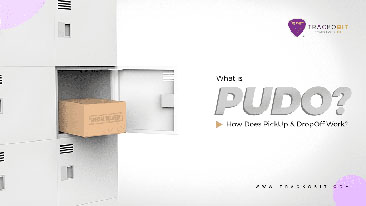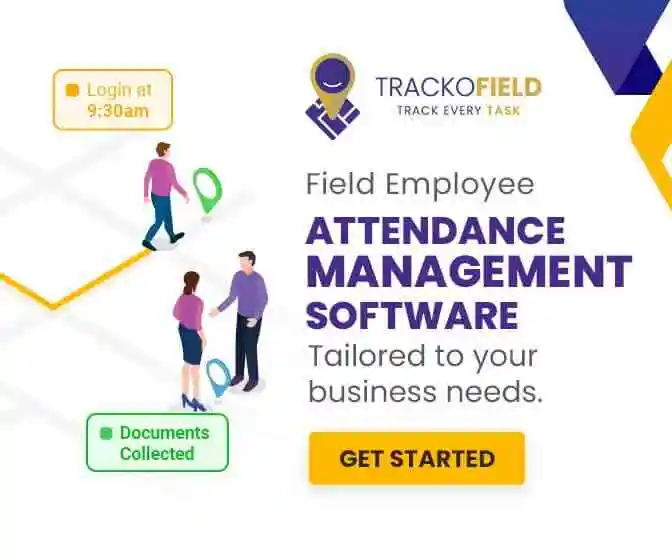-
TrackoBit
Manage commercial vehicles with the new-age Fleet Management Software
TrackoBit -
TrackoField
Streamline your scattered workforce with Field Force Management Software
TrackoField -
Features Resources
-
Blog
Carefully curated articles to update you on industrial trends. -
White Paper
Insightful papers and analysis on essential subject matters. -
Glossary
Explore an alphabetical list of relevant industry terms. -
What’s New
Get TrackoBit & TrackoField monthly updates here. -
Case Study
Explore the cases we solved with our diverse solutions. -
Comparisons
Compare platforms, features, and pricing to find your best fit.
-
About Us
Get to know TrackoBit: our team, ethos, values, and vision. -
Careers
Join the most dynamic cult of coders, creatives and changemakers. -
Tech Support
Learn about our technical support team and services in detail. -
Events
Check out the exhibitions where we left our marks and conquered. -
Contact Us
Connect with us and let us know how we can be of service.
10 Advanced Features Every GPS Tracking System Should Have
- Author:Anvesha Pandey
- Read Time:7 min
- Published:
- Last Update: February 17, 2025
Table of Contents
ToggleWith countless GPS tracking systems available, choosing the right one can be tricky. Discover the top 10 must-have features for proactive surveillance and maximum uptime.
Table of Contents
Toggle
Relying on basic GPS tracking? You might be missing out on critical insights that could save you time & money. Sure, location tracking is helpful, but what about fuel theft and route deviations?
What about reckless driving and other unsafe behaviors? These challenges can drain your resources faster than you realize.
A truly advanced GPS tracking system doesn’t just tell you where your vehicles are. It provides real-time insights into speed, fuel levels, engine health, and driver behavior.
This piece unfolds 10 must-have GPS tracking features that go beyond location monitoring.
So, without any delay- let’s dive in!
Top 10 GPS Tracking System Features: What to Look For?
1. Live Vehicle Location & Route Tracking
Real-time tracking is considered the core of GPS tracking systems. With this feature, businesses can instantly monitor location, speed & movement. The locational data is transmitted via cellular or satellite networks. This transmitted data is stored cloud-based system using GPS devices.
This one feature makes route planning and trip management for fleets a lot easier. Further reducing delays.
Real-time tracking is a game-changer for businesses managing logistics operations. It becomes valuable when handling multiple types of vehicles, improving coordination and efficiency.
2. Geofencing for Delivery Hubs
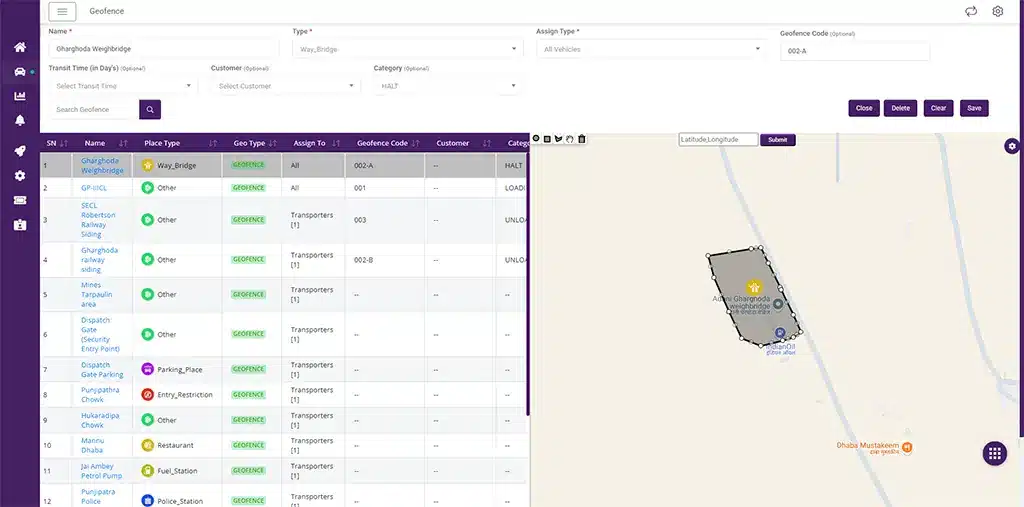
Geofencing
Geofencing is a must-have for fleet management. It allows you to mark locations, delivery routes & key operational zones with precision. Once set up, it ensures vehicles follow designated paths. This improves efficiency and reduces unnecessary detours. Plus, instant alerts keep you informed whenever a vehicle enters or exits these zones.
Additionally, beyond delivery routes, you can also mark restricted areas. Doing this will help you prevent unauthorized trips. By keeping vehicles out of no-go zones, geofencing helps enhance security & compliance.
3. Video Telematics for Incident Management
Video telematics goes beyond location tracking. As it offers real-time visibility into the road and driver behavior.
It offers an inbuilt ADAS that helps detect lane departures, and unsafe driving. This further provides instant alerts to prevent accidents.
Moreover, it also offers DMS to track the in-cabin activities of the driver. Further ensuring safer driving.
It offers features like live streaming and event-based recording. This provides crucial proof for incident management, reducing false claims and enhancing accountability.
Altogether this helps in reducing liabilities, improving safety & optimizing driver performance.
4. Integration with IoT Sensors (for Fuel, Cold Chain & More)
GPS tracking system offers seamless integration with IoT. This helps in improving GPS tracking & fleet monitoring. It integrates well with multiple fuel sensors, temperature monitoring sensors, tyre pressure monitoring
For instance- Fuel sensors help detect theft and optimize consumption.
Whereas, cold chain monitoring ensures perishable goods stay within safe temperature limits. Other IoT integrations, like tire pressure monitoring, prevent breakdowns and enhance vehicle health.
These smart sensors provide instant alerts and actionable insights.
Altogether, it helps reduce fleets’ overhead costs and improve efficiency. That’s just not all it also ensures compliance with industry standards.
5. Analytical Dashboards
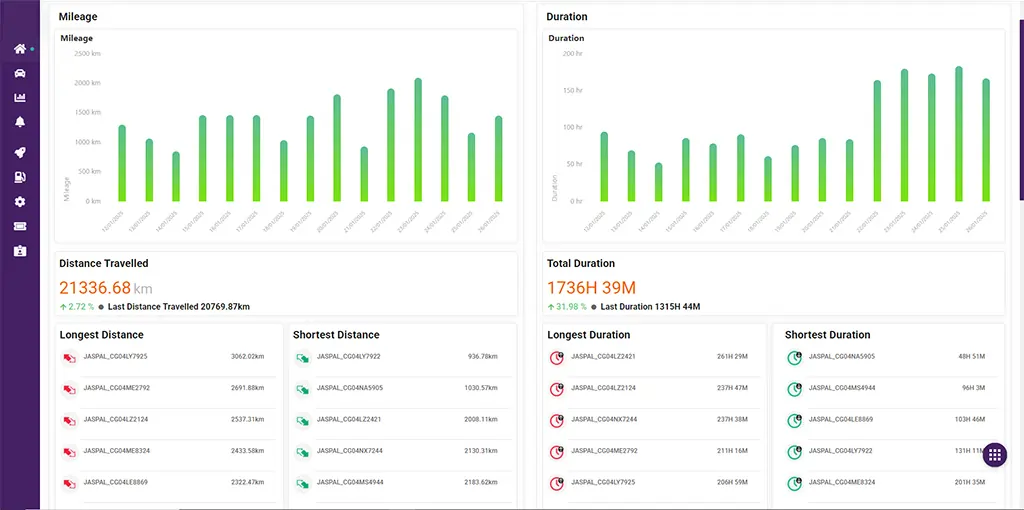
That’s how an analytical dashboard look like!
Basic, Advanced, and Analytical Dashboards are more like your control center. A basic dashboard gives you an overview of the total vehicles on or not on the trip. But an analytical dashboard takes it up a notch higher. It provides detailed insights into total trip status.
It gives minute details of each vehicle under different transporters or admins.
Imagine having all your fleet data at your fingertips. They could be presented with colorful pies or graphs. It doesn’t stop there- It also uncovers inefficiencies and identifies trends.
This also helps fleet managers to make data-driven decisions.
Simply put, having insights into data can truly transform your fleet management strategy.
6. Electronic DVIR Reports
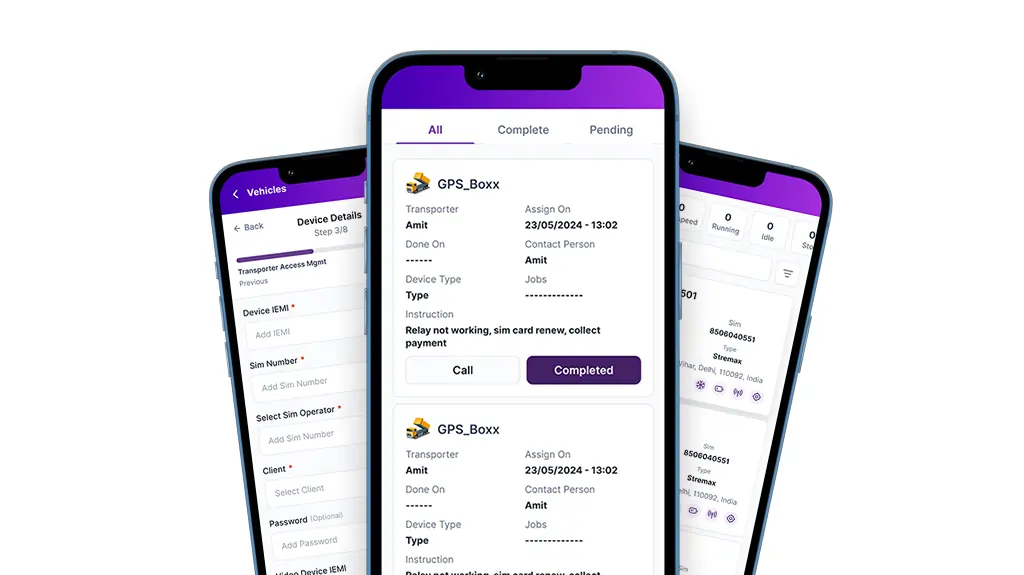
Have a look into how DVIR looks like!
Safety & compliance starts with regular vehicle inspections. DVIR is a feature that digitalizes pre-trip & post-trip inspections. Drivers can use DVIRs to report vehicular issues. They can also add pre- and post-inspection reports.
With DVIR you can ensure that defects are addressed before vehicles hit the road. This not only helps in minimizing risks but also enables faster decision-making.
Read Blog – DVIR: A Key Tool for Mitigating Fleet Downtime
7. ETAs & PODs
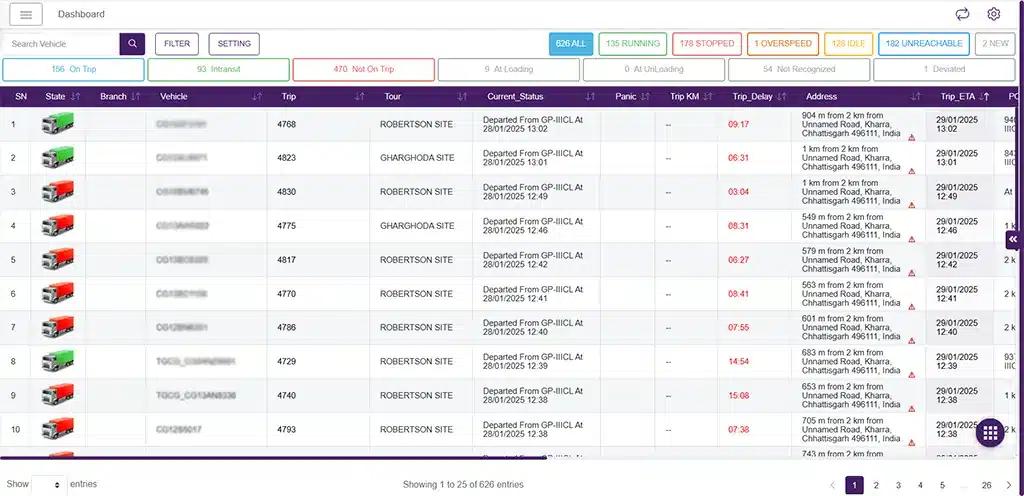
ETAs & POD
Timely deliveries are the backbone of fleet operations. Real-time ETA updates promote operational transparency. Additionally, it improves customer relations. Once deliveries are made, POD helps you have proof of the consignments delivered.
Generally, PODs include e-signatures, QR code scans, or OTP verifications. This helps ensure accountability & minimizes disputes.
8. Historical Data Maintenance
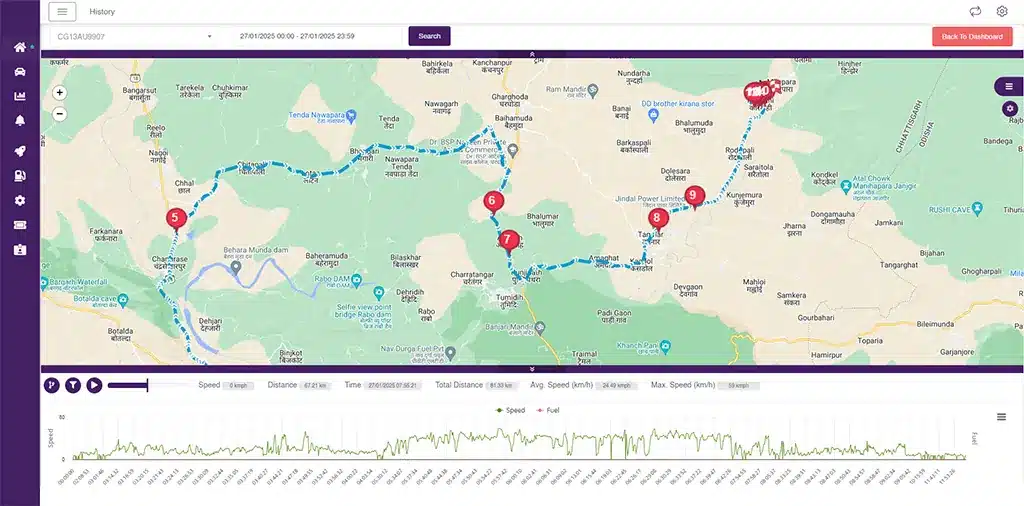
Insights into historical data.
Historical data allows for in-depth analysis of fleet performance over time. The system stores trip data, fuel usage, and other operational metrics. It retains this information for a minimum of six months. Advanced playback features allow you to revisit specific trips for detailed analysis.
Automated reports can be easily exported, providing valuable insights with minimal effort. All this data can be used for audits or performance reviews.
📌 Businesses using big data analytics experience 10x faster decision-making. Says, one of the reports by McKinsey&Company
9. Custom Alerts & Notifications
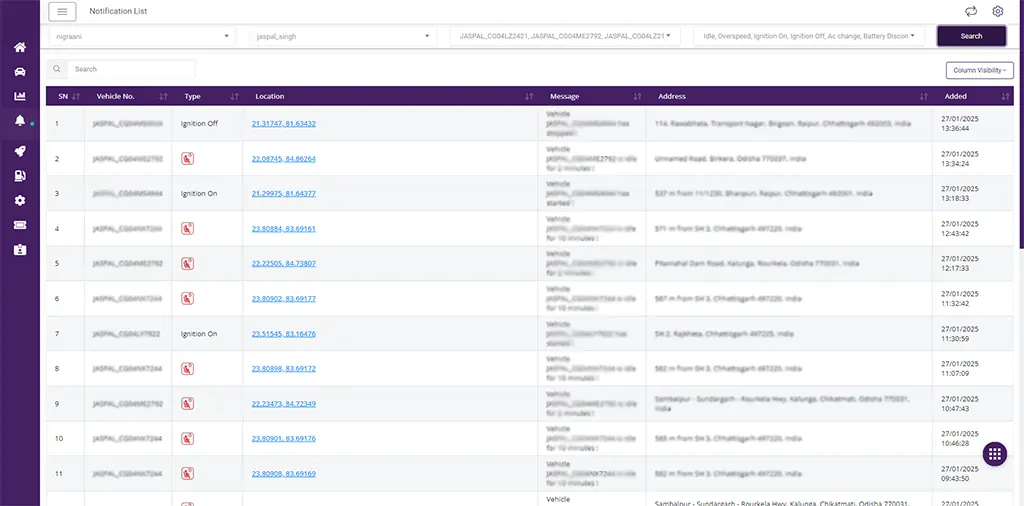
Custom Alerts & Notifications
Custom alerts keep you informed about critical events like overspeeding and harsh braking.
They also notify you of other hazardous events, ensuring prompt action.. These alerts are generated through the combination of real-time GPS tracking & event-based triggers.
Fleet management software like TrackoBit offers 100+ types of alerts.
This helps you stay updated for maintenance reminders and geofence breaches. That’s just not all you also get – unique thresholds like temperature alerts.
10. Fuel Monitoring
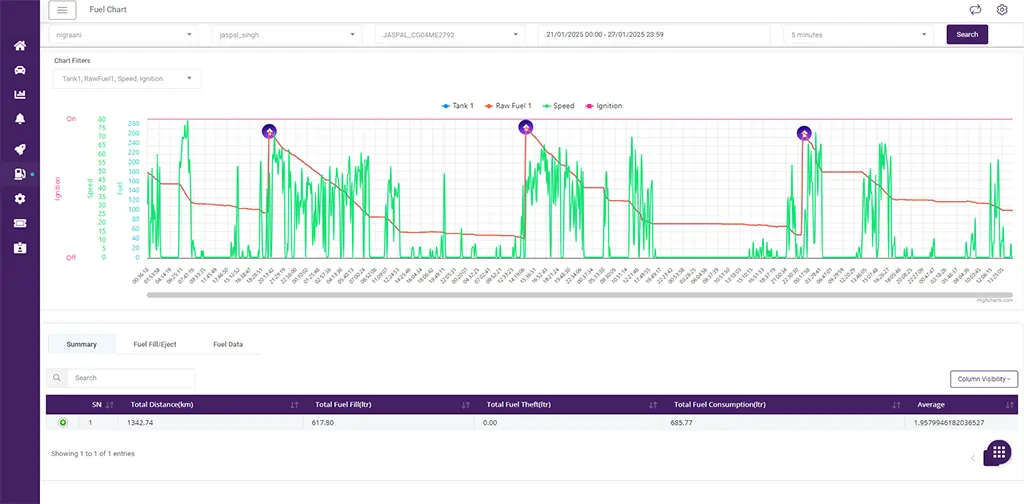
Fuel Monitoring
That’s where accurate fuel monitoring comes in. This feature integrates with fuel sensors installed in your vehicles. GPS tracking systems should offer real-time updates on fuel levels and consumption rates. They can also detect issues like fuel theft by identifying sudden drops.
Fuel monitoring systems ensure impeccable accuracy in tracking fuel usage. Advanced analytics help identify patterns to minimize wastage.
Top 4 Additional Features (Quick Pointers)
1. Vehicle Diagnostics
Vehicle diagnostics allow remote monitoring. With the help of OBD-II or CAN bus devices, they collect critical data on engine performance.
In fact, an ideal GPS tracking system lets you
- Analyze data to optimize fleet efficiency and maintenance.
- Monitor battery voltage and detect fault codes for proactive maintenance.
- Provides real-time fault code alerts for quick response times.
- Reduces the risk of severe mechanical failures.
- Keep fleets running smoothly and prevent unexpected breakdowns.
2. Service & Maintenance Management
Let’s be real- keeping track of servicing schedules for a whole fleet is next to impossible. This one feature automates reminders for servicing dates & insurance deadlines.
- Regular upkeep minimizes unexpected breakdowns, reduces repair costs, and extends vehicle lifespan.
- Automated logs help maintain compliance with service schedules.
- Reduces the need for manual tracking.
- Prevents missed maintenance and unexpected issues.
- Ensures fleets run smoothly and efficiently.
3. Fleet Performance Analytics
Next up is fleet performance analytics. A GPS tracking system brings a lot to the table. Here is a little showdown of what the system does for you.
- Helps you assess fleet health and productivity by analyzing key performance data.
- Tracks maintenance costs, fuel consumption, vehicle utilization, and driver efficiency.
- Simplifies identifying areas for improvement.
- Provides detailed analytics for data-driven decision-making.
- Optimizes fleet operations, reduces operational costs, and extends vehicle lifespans
4. Customized Solutions with Seamless Integration
Last but not least is customized solutions with seamless integration. A truly efficient GPS tracking system should be flexible, integrable, and scalable to meet evolving business needs.
- Customizable GPS tracking to match unique fleet needs.
- Seamless API integration with telematics & ERP systems.
- White-label solutions for branding & modular designs.
- Scalable technology that grows with your business
Maximize Fleet Efficiency with TrackoBit’s GPS Tracking
Choosing the right GPS tracking system is way more than just basic functionality. The right features can truly transform the way you manage your fleet.
So, don’t settle for less. Equip your fleet with a GPS tracking system that ensures scalability and efficiency.
This system supports long-term success by optimizing fleet management. An ideal system doesn’t just track your vehicles.
It also optimizes their performance and reduces costs. Further streamlining your entire fleet management process.
If you’re looking for a GPS-tracking system that equips all these features- TrackoBit can be the best bet. The brand offers more than just a basic tracking solution. Say goodbye to all the fleet management challenges you face.
Leverage the power of real-time tracking, actionable insights & better decision-making today.
FAQs
-
What is GPS tracking and how does it benefit my fleet?
GPS tracking provides real-time vehicle location data. This further helps in optimizing routes, reducing costs, and improving fleet management.
-
Can GPS tracking help reduce fuel consumption?
Yes, GPS tracking allows you to monitor fuel usage, plan routes, and reduce idling. Further saving fuel costs.
-
How accurate is real-time GPS tracking?
GPS tracking offers near-instantaneous location updates.
-
How can GPS tracking improve driver safety?How can GPS tracking improve driver safety?
By monitoring driver behavior, systems promote safe driving practices and reduce risky behaviors.
-
Is GPS tracking scalable for growing fleets?
Modern GPS tracking systems are designed to scale. Further adapting to the needs of expanding fleets.
-
In what industries is a GPS tracking system used?
Fleet Management -Emergency -Agriculture -Rental Services
Anvesha is a communication specialist at TrackoBit. With a strong background in media and communications, she adds much-needed balance and brevity to TrackoBit’s... Read More
Related Blogs
-
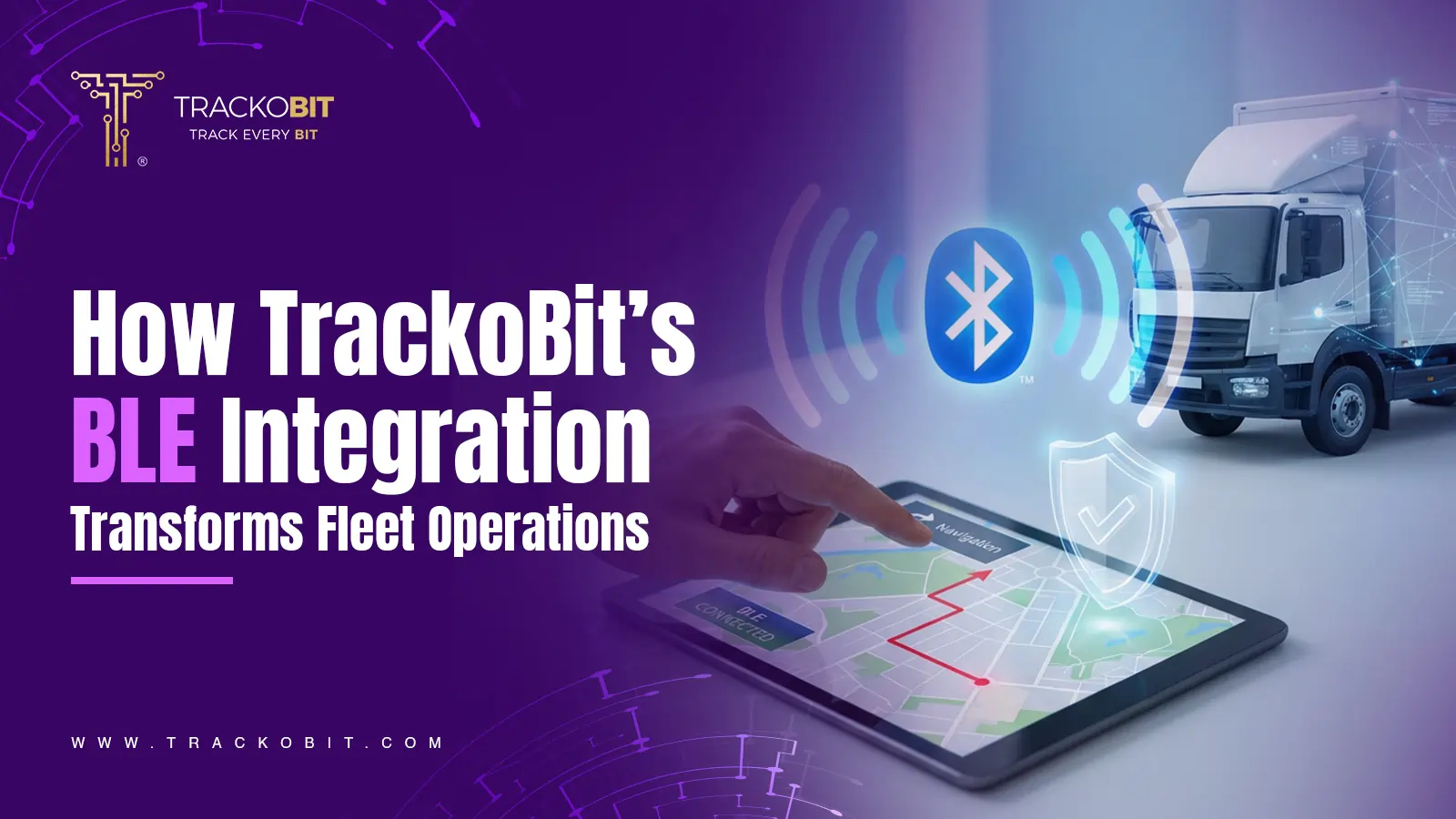
Plug, Pair, Perform TrackoBit Introduces BLE Sensor Integration
Tithi Agarwal November 26, 2025TrackoBit’s BLE Sensor Integration enables wireless, real-time monitoring with faster installs and accurate insights. It improves fleet efficiency, visibility, and…
-
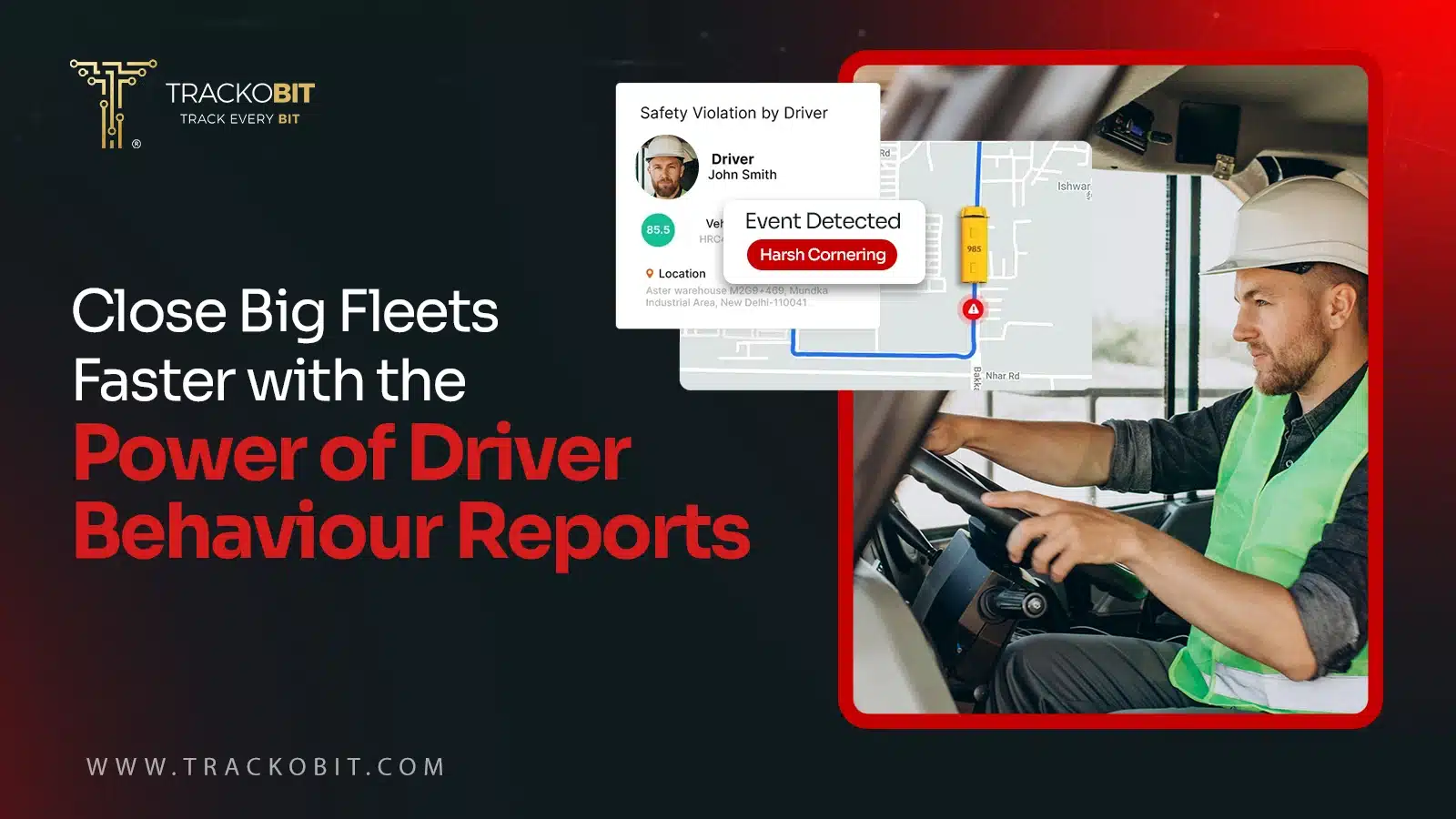
How to Use Driver Behavior Reports as a Sales Hook to Close Big Fleets
Tithi Agarwal October 16, 2025TrackoBit’s driver behavior reports empower fleet providers to win big contracts by showcasing safety, efficiency, and measurable ROI.
-
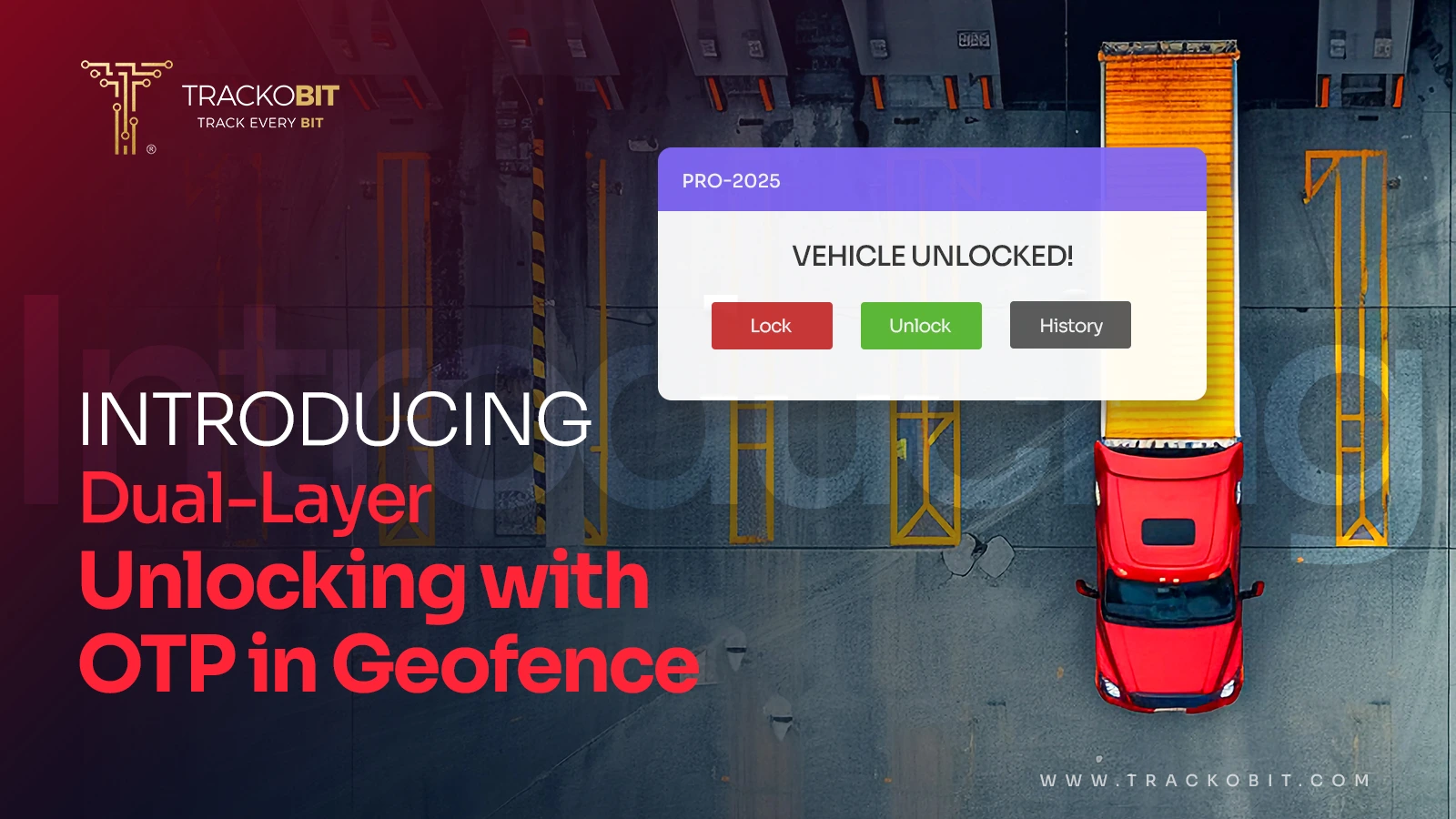
TrackoBit’s Unlocking in Geofence with OTP: Elevating Cargo Protection
Tithi Agarwal September 16, 2025TrackoBit’s latest feature – Unlocking in Geofence with OTP lets you lock out theft and unlock cargo only at the…
-
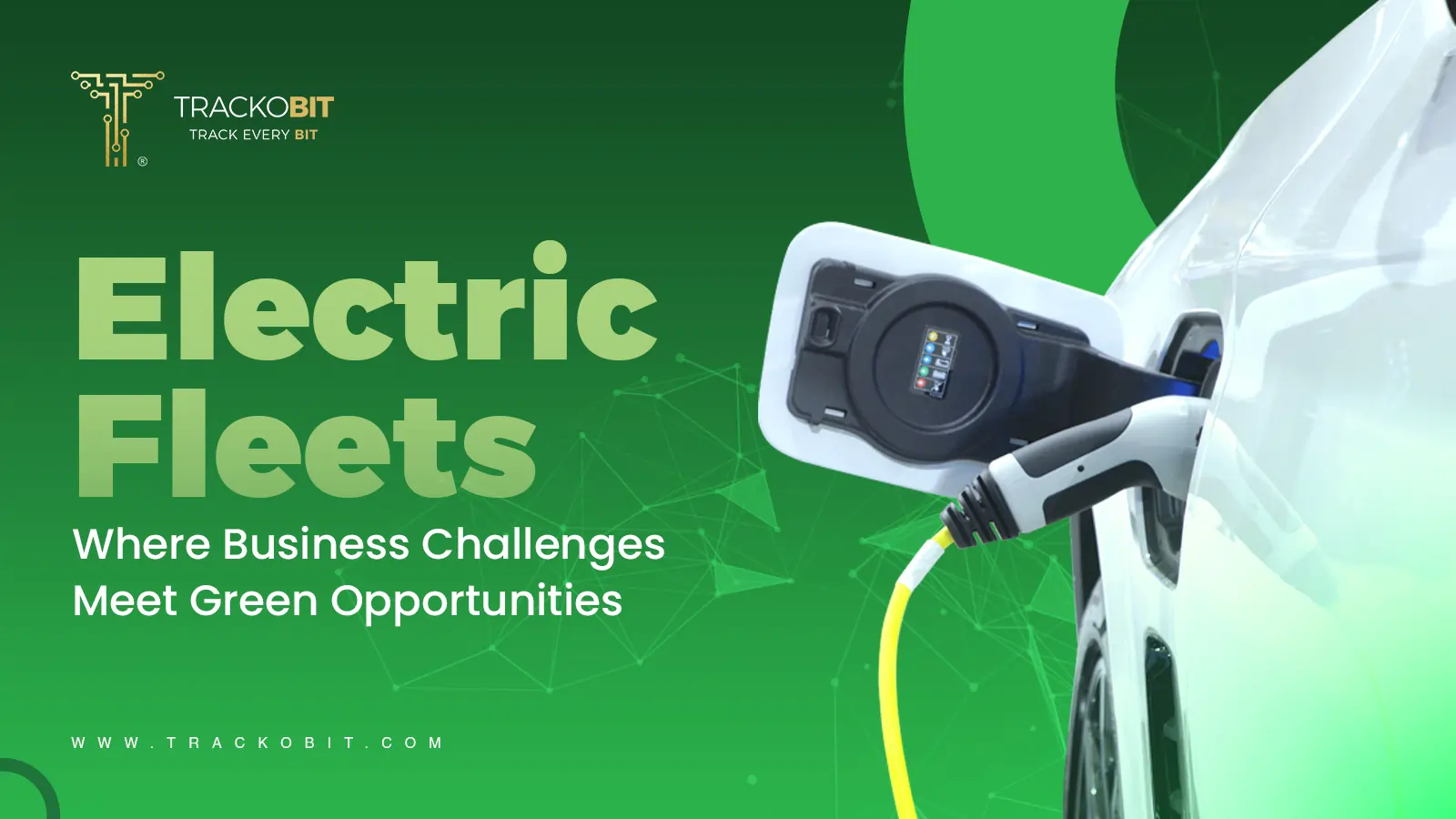
The Rise of Electric Fleets: Challenges and Opportunities for Businesses
Tithi Agarwal September 4, 2025The global fleet landscape is poised for a decade-long transformation. This change is being powered by electricity. Logistics-led businesses are…

Subscribe for weekly tips to optimize your fleet’s potential!
Your inbox awaits a welcome email. Stay tuned for the latest blog updates & expert insights.
"While you're here, dive into some more reads or grab quick bites from our social platforms!"Stay Updated on tech, telematics and mobility. Don't miss out on the latest in the industry.
We use cookies to enhance and personalize your browsing experience. By continuing to use our website, you agree to our Privacy Policy.
































